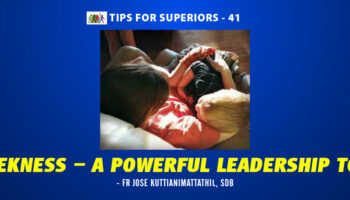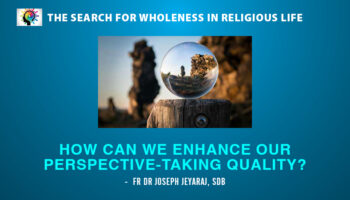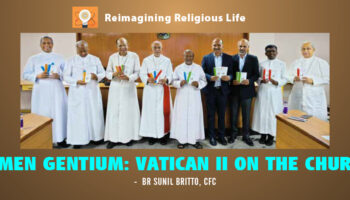If you ask four children to draw the picture of a house, will they draw them in the same way?
No.
A kid living in an Indian village will probably draw a thatched hut.
A city boy may draw a multi-storey building and indicate a flat, e.g., 4C, as his house.
An Eskimo child may draw an igloo.
A wealthy girl or boy may draw a mansion.
All four are right, of course. There is no one way of understanding the term, “house.”
These four are different “models” of a house.
Similarly, there are four basic “models” or key ways of understanding spirituality.
The first is COMMUNITARIAN. Someone may say, “I follow Franciscan spirituality,” or “Here are the elements of Ignatian Spirituality.” In such language, one is aware of being part of a special group, and one is expected to follow the values and practices of that group. Thus, a novice mistress is expected to know the “spirituality” of her order and to train the novices in that.
Casting the net wider, one may speak of Christian Spirituality, Hindu Spirituality, Buddhist Spirituality, etc. Think of Lent for Christians, Hindu dietary rules or the Islamic Haj.
The second is PSYCHO-DEVELOPMENTAL. Proponents of this approach are not writing for followers of a particular religion or religious order, but for all human beings. This approach takes emotions and human development seriously. Thus, when we speak of the spirituality of mid-life, or women’s approach to spirituality, we are talking about how emotions, gender, stages of life or facing death affect the way we understand spirituality.
The third “model” can be called CONTEMPLATIVE. Thus, when we observe silence during a retreat or in an ashram, this is understood as a spiritual practice. When someone sets aside a week or a month for meditation or a retreat, this is supposed to help the person’s spiritual life. Some people spend time regularly in ashrams. Others attend Christian retreats, or Hindu ashrams or Vipassana meditation.
A fourth approach to spirituality is SOCIO-POLITICAL. Some call it liberationist, taking the term used by Liberation Theologians. People are moved to take trouble to fight for justice, to procure rights for the deprived. Others take up common concerns like gender issues or ecology. Still others fight for racial or caste justice. Just to pray for a better world without getting involved in the struggles for justice seems to them to be an irresponsible and selfish escape.
All four approaches or models have their strengths and weaknesses.
They are also mutually critical. In India, the so-called “Ashram group” (those who are enthusiastic about retreats, ashram life, contemplation, Sanskrit chanting, monastic life, etc.) and the supporters of Liberation Theology have been strongly critical of each other. The first group tends to see the other as being political rather spiritual, and the activists see the first group as escapists cut off from the needs and struggles of people. Both quote Jesus, saints and Church documents to support their stand. For the first group, a saint like John Mary Vianney is an excellent model for priests. For the second group, Oscar Romero or Sr Valsa John are more inspiring.
For the complex world of today, and to respect the different gifts and ministries of people, we need to be aware of the strengths and weaknesses of each model.
Further, we need to develop and propose an integral spirituality that is not lame or one-sided. We need to be men and women of community; we need to be emotionally healthy; we need to be contemplatives to see the deeper truths about ourselves and about God; and we cannot be blind or indifferent to the gross injustices happening around us. Hence the need of living an integral spirituality. One-sided models can do harm.
In the coming issues, we shall look at these issues one by one.

To subscribe to the magazine Contact Us





